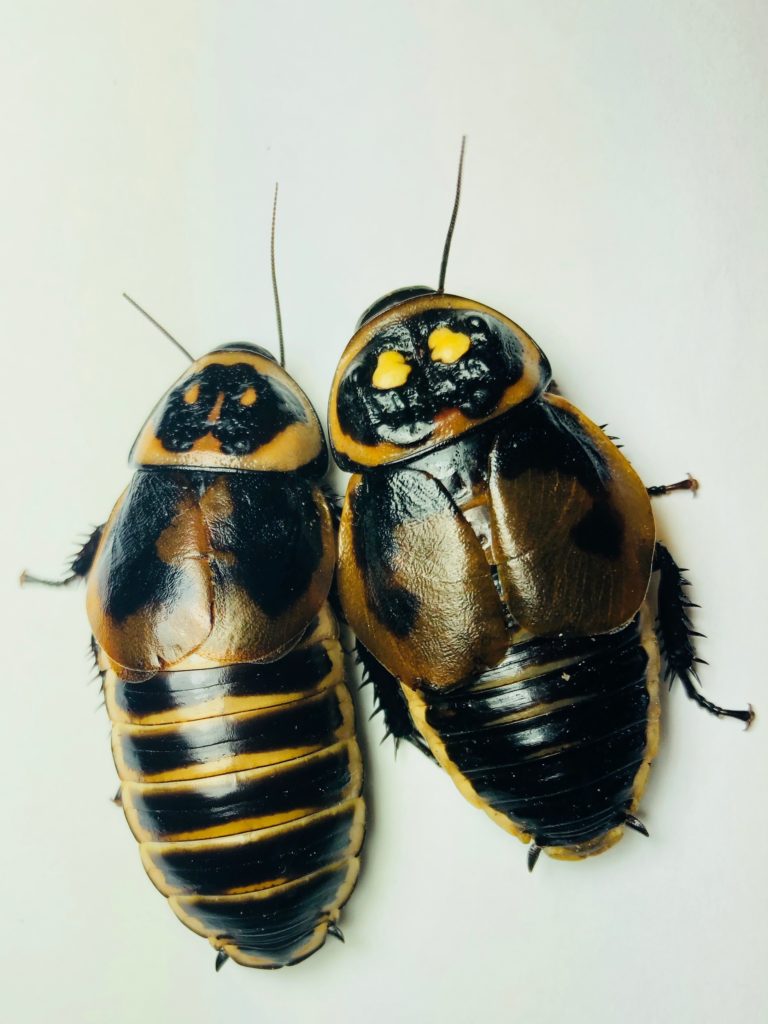Description
Warty Glow spots are truly flashy. I mainly focus on hissing roaches but these I could not pass up and I think you can see why. The males possess bright yellow spots on the top of the pronotum. In the wild they consume bioluminescent bacteria that emit light through the transparent “window” of the glow spot. Females lack this but are still gorgeous without them. Both male and female are glossy black with a yellow boarder and two irregular black spots on the pronotum. Males possess a large warty glow spots on the pronotum and females possess two smooth yellow markings. Both sexes possess vestigial wing covers that are wider than the regular glow spot these do not function for flying.
Origin
South America
Reproduction
Females release pheromones when receptive and mate with select males. Males establish the right to mate by pushing each around. Females produce a small oblong brown egg case (ootheca). Egg cases contain 15-30 plus eggs. The ootheca is retained inside the female during the 50-60 gestation until they hatch and are pushed out. Nymphs are round shaped and have a orange head.
Development
Nymphs go through a period of 6-7 molts over a period of 6-10 months. Development is largely influenced on temperature as well as nutritional quality. Nymphs often eat some or all of their old shed. If the humidity is not maintained molting problems can occur.
Nutrition
Glow spot roaches eat a wide range of food, however it should be organic and you should avoid foods that naturally contain phytates and oxalates. I find that feeding glowspots organic bananas, oranges, carrots, and zucchini works well. I prefer to soak a high protein dog puppy food as the roaches can consume it much easier.
Housing
If you have a small colony they should be housed in a small container. They seem to breed best when kept slightly crowded. This also keeps them in close proximity with their food and water. The media that you place them on should be a mixture of peat and well-rotted compost. The mix should be just barely moist and not soggy. Many people use egg cartons, however I have found that using natural pieces of tree bark stacked toward the back to provide lots of shelter promotes breeding and proper humidity naturally. I like to keep the back half of the tank on the heat mat. I will mist the tank or dump water into the back half were it will naturally evaporate and provide humidity.
Rearing notes
Slow breeding and it takes a long time for the nymphs to mature. Be patient and make sure you provide sufficient media as they are a burrowing species. Rotting wood added to the tank supplements their diet and encourages breeding. Dry dead oak leaves also are good to add and are consumed by these roaches. Keep one side of the tank moist and the other dry. Try to maintain temps slightly above 80 to enhance breeding activity.

